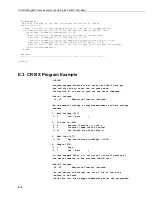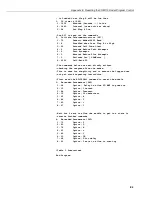
Appendix D. Using the COM110 in
Transparent Mode for GSM Dial-up use
It is possible to use the COM110 in transparent mode, when the default non-transparent
(RLP) mode is not supported by the cellular phone network or is incompatible with the
COM110.
D.1 Introduction
The COM110 software includes an advanced error correction protocol known as
RLP, which is specially designed for RF links. This protocol is now used in one
form or another by most GSM data units but the COM110 implementation of RLP
may not be compatible with all GSM networks and some networks do not support
this mode at all.
If you find that the COM110 does not work on the network and
suspect that it may be due to the RLP protocol, you must check
carefully with your own network provider to see if the COM110
implementation of the protocol is known to work correctly on
their network.
The transparent mode relies on Loggernet/PC400W to correct any communication
errors. On poor quality lines the PC software will often drop the call and redial
when it sees a certain level of errors. (The non-transparent mode is less prone to
doing this.) For successful and fast communication a signal strength (as reported
by AT+CSQ – see Appendix C) of 18 or above is recommended for transparent
mode. The non-transparent mode will operate at signal levels down to as low as
10.
D.2 Disabling the RLP Protocol
If you wish to use the COM110 in transparent mode, do the following:
1.
Get your SIM card in the COM110 enabled for transparent mode. In some
cases you may have to call your airtime provider to do this, (e.g. UK Cellnet
where you will be allocated a new number for this mode) while others (such as
UK Vodafone) need no configuration on the network and will switch
automatically depending on the COM110 configuration.
2.
Re-enter the setup string as shown in Section 5.3 of this manual, but also enter
the AT+CBST command as AT+CBST=7,0,0 (where the last digit, 0,
switches the unit to transparent mode).
3. Save the settings using the AT&W command as normal.
NOTE
D-1
























